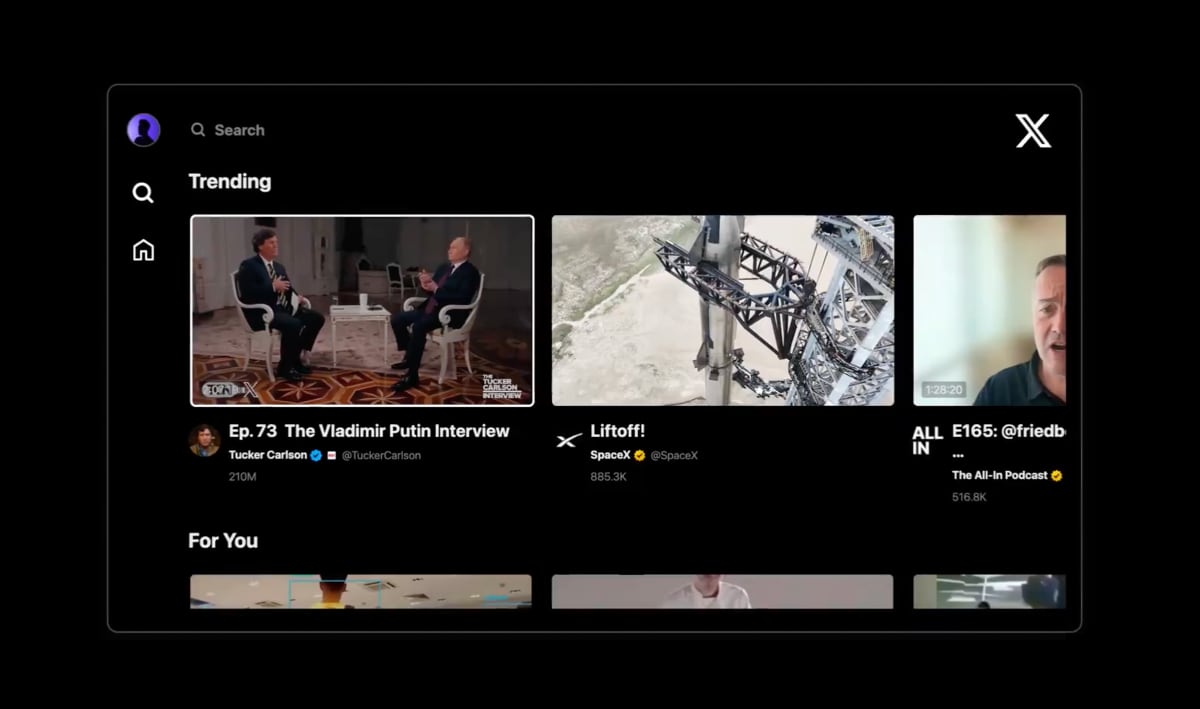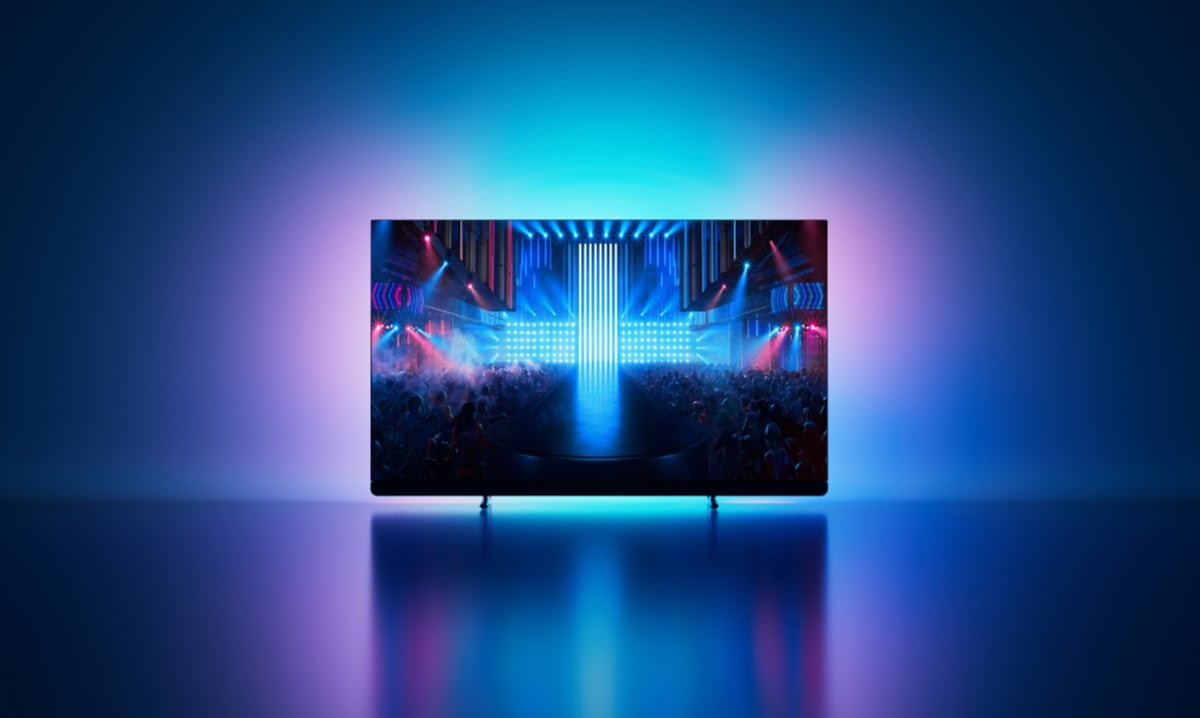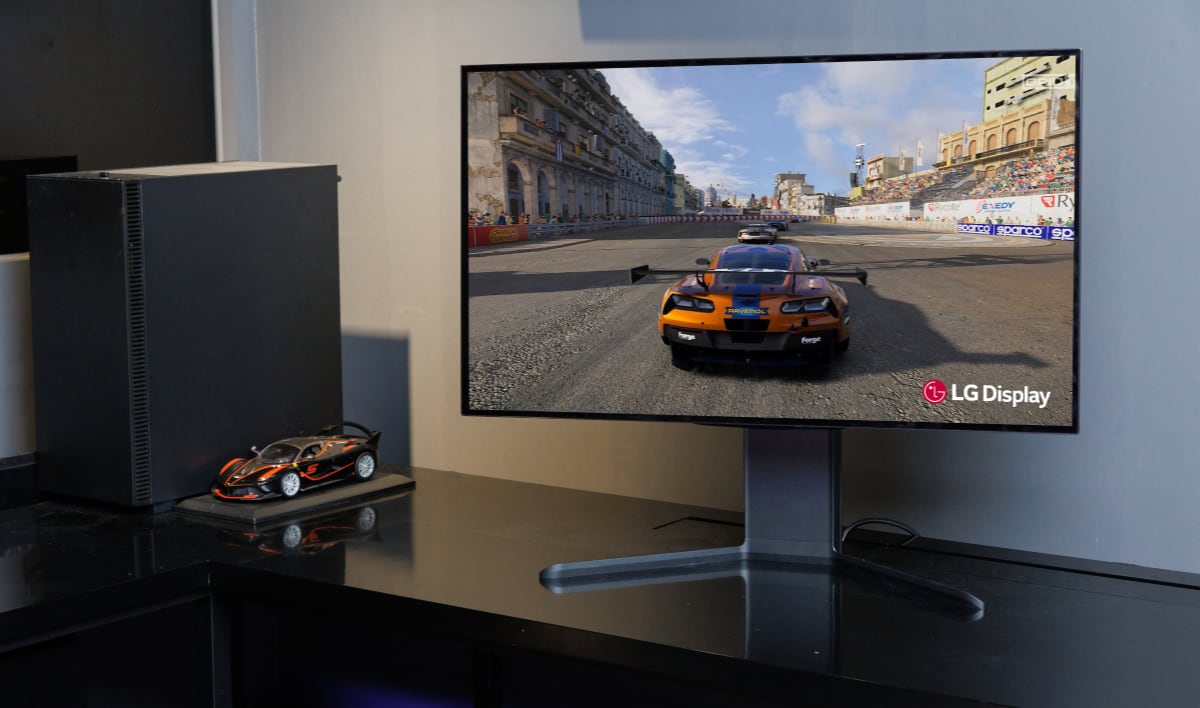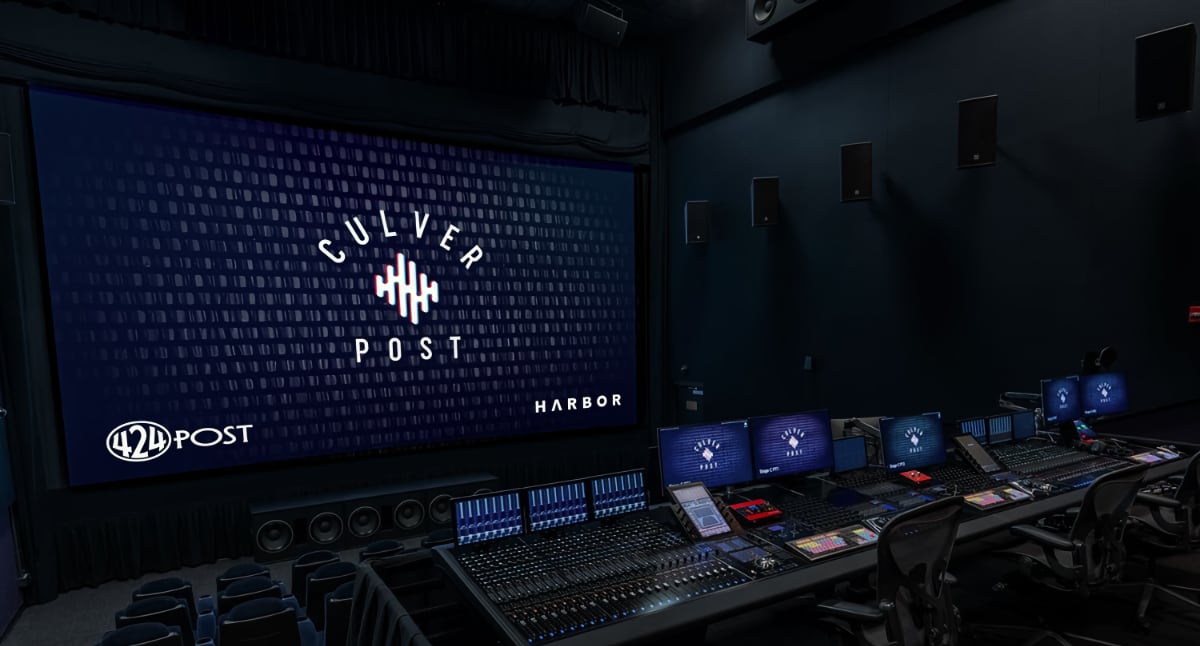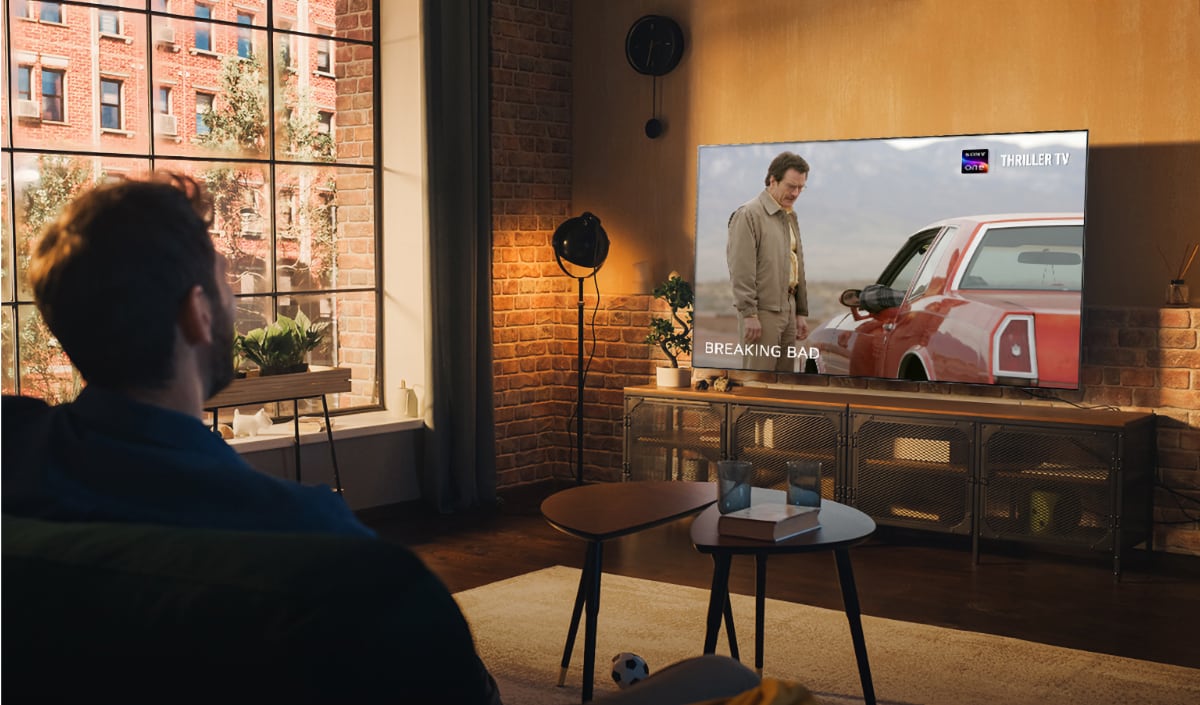In 2011 OLED panels will take the size step into larger devices with Samsung’s new 7.7” Tablet and 5.3” Note. Both Galaxy devices were announced at IFA 2011 in Berlin. In this article we will take a look at the two different Super AMOLED and Super AMOLED Plus panels in the two devices. Find out why the 5.3” Note has a subpar screen.
Samsung takes OLED to larger screen sizes
Samsung is one of the proponents of OLED panel technology and now OLED takes the step into larger devices with the introduction of Galaxy Tab 7.7 (with Super AMOLED Plus) and Galaxy Note (with Super AMOLED).
The OLED display technology is of particular interest to us here at FlatpanelsHD because it is widely considered the next-generation of display technology and the successor to LCD/LED. OLED technology enables response time faster than 0.001 ms, perfect viewing angles, perfect black reproduction and ultra-slim and flexible screens – at least in theory.
In this article we explain the difference between Super AMOLED Plus and Super AMOLED (without Plus). We also visited Samsung’s IFA booth for some hands-on impressions.
Super AMOLED Plus Galaxy Tab 7.7
Let us start with Galaxy Tab 7.7 with a 7.7” Super AMOLED Plus. That is a lot of words in one name but it basically means that the OLED panel uses a RGB (red, green, blue) pixel structure just like LCD and plasma panels. This is the “right” way to create a display panel and ensures perfect pixel sharpness.
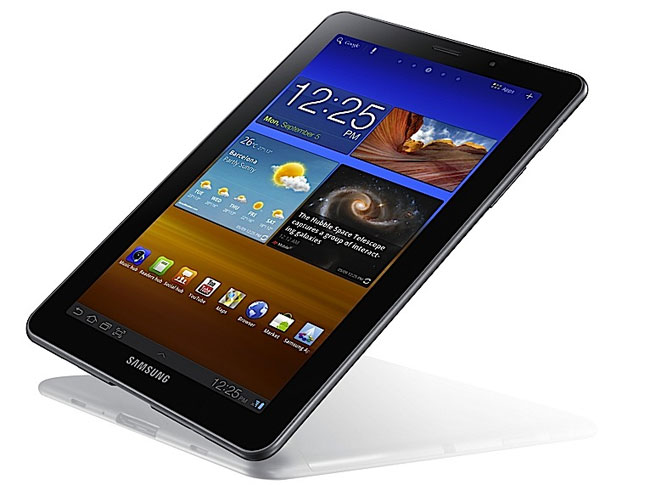
Samsung Galaxy Tab 7.7 with Super AMOLED Plus
It is also worth noting that the panel is different than in Samsung Galaxy 10.1 Tab. The 10.1” tablet uses a traditional LCD panel.
The 7.7-inch OLED screen is not the largest OLED panel showcased but it is the largest one in mass production. It comes with a 1280x800 pixel resolution with 196 ppi (pixels per inch). In comparison, Apple’s iPad uses a LCD panel with 132 ppi. Ppi tells you the pixel density.
The Super AMOLED Plus panel in Galaxy 7.7 is extremely bright – a significant advantage when using it outdoors. We headed over to Samsung’s IFA booth on Sunday but to our surprise the tablet was nowhere to be seen. Samsung had to remove it due to the ongoing legal battle with Apple. We have seen Super AMOLED Plus panels – larger and smaller – many times in the past so we know what they look like but we still really wanted to see this product. So we moved on and took a look at the new Samsung Note.
Super AMOLED in Galaxy Note
Samsung Galaxy Note is not a smartphone and not a tablet – it is a Note, Samsung says. The OLED panel is a Super AMOLED – without “Plus” – and measures 5.3 inches. There is a reason for the missing “Plus” – and it is not a good one.
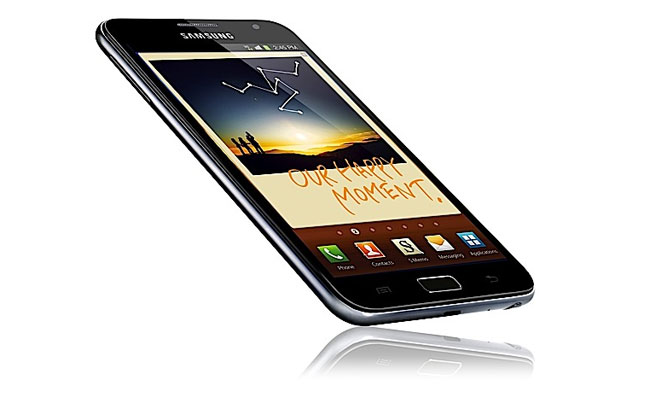
Samsung Note with Super AMOLED
Super AMOLED is based on a so-called "PenTile" pixel structure. Instead of each pixel consisting of RGB (red, green, blue) sub-pixels, some sub pixels are being “shared”. The PenTile pixel structure consists of 1/3 fewer sub-pixels when compared to a RGB (such as Super AMOLED Plus) with the same resolution, and most people can see the pixel-sharing effect in practice. Text appears less detailed and outlined. You can see the difference between Super AMOLED (with PenTile) and Super AMOLED Plus (with RGB).
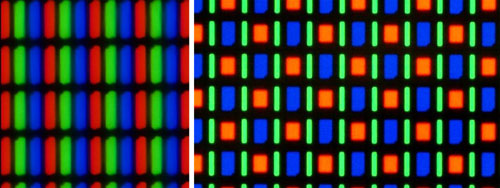
To the left a standard RGB panel, to the right a PenTile Matrix pane, Source: Peter Halasz & StealthCopter
So even though the panel in Galaxy Note boasts the same 1280x800 pixel resolution as the larger Galaxy Tab 7.7, there is a big difference. We took a closer look at the Galaxy Note at IFA and even though the screen has some significant advantages over LCD screen used in other tablets today we could not disregard the PenTile matrix.
Because some pixels are “shared” text appears less detailed. The more correct explanation is that letters have a visible color tint at edges. See the picture below (click to image to zoom in).
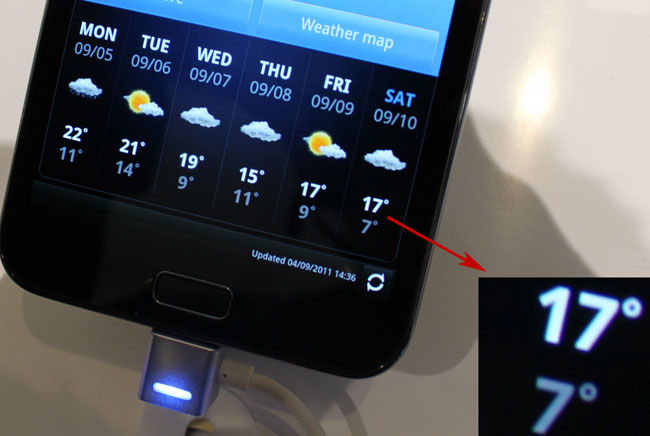
Super AMOLED from up-close – notice how the text has a blue tint in the right side and a green tint in the left side
Notice how the letters have a blue tint on the right side and a green tint on the left side. The effect varies depending on the background color but when you are aware of the effect you will see it most of the time.
Super AMOLED also struggles with another problem because of the PenTile matrix; viewing angles. We often say that OLED panels have perfect viewing angles (actually we even claimed that in the beginning of this article) but when a PenTile pixel matrix is utilized viewing angles are affected. Color shifting starts from approximately 40-50 degree angles and the OLED panel gets a bluish / greenish tint.
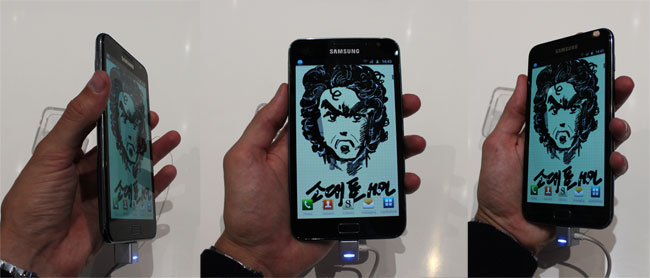
Super AMOLED from up-close – notice how the panel becomes blue / green from when viewed from an angle
The future of OLED
To sum up, I need to repeat that Super AMOLED is cheap alternative to a real OLED panel. To release the full potential of the OLED technology we need to demand Super AMOLED Plus (only Samsung uses the Super, AMOLED & Plus names). Even though we did not see Samsung’s 7.7 Tablet with Super AMOLED Plus at IFA we have seen the panels many times in the past. Personally, I would prefer an IPS LCD panel (such as the one in iPhone 4 and iPad) over a Super AMOLED panel.
We certainly respect Samsung for bringing OLED into larger screen sizes but if manufacturers want to supply TVs with OLED panels in the future it has to be the RGB type. Super AMOLED has no future in monitors or TVs and we hope the Galaxy Note is the last stop. Check for yourself when you have a chance. We are pretty certain you will feel the same way.
You can find all OLED articles from FlatpanelsHD on our OLED coverage page. You can also see our review of LG’s 15” OLED-TV here.
 OLED in Samsung's 7.7" tablet & 5.3" Note - analysis
OLED in Samsung's 7.7" tablet & 5.3" Note - analysis







